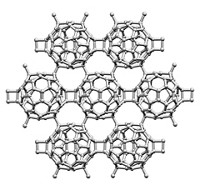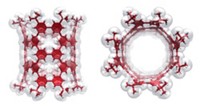Advertisement
Grab your lab coat. Let's get started
Welcome!
Welcome!
Create an account below to get 6 C&EN articles per month, receive newsletters and more - all free.
It seems this is your first time logging in online. Please enter the following information to continue.
As an ACS member you automatically get access to this site. All we need is few more details to create your reading experience.
Not you? Sign in with a different account.
Not you? Sign in with a different account.
ERROR 1
ERROR 1
ERROR 2
ERROR 2
ERROR 2
ERROR 2
ERROR 2
Password and Confirm password must match.
If you have an ACS member number, please enter it here so we can link this account to your membership. (optional)
ERROR 2
ACS values your privacy. By submitting your information, you are gaining access to C&EN and subscribing to our weekly newsletter. We use the information you provide to make your reading experience better, and we will never sell your data to third party members.
Materials
Nanocalipers Get A Grip On Nanotubes
Diporphyrin molecule discriminates among single-walled carbon nanotubes on the basis of diameter and other physical features
by Bethany Halford
March 25, 2013
| A version of this story appeared in
Volume 91, Issue 12
The properties of single-walled carbon nanotubes, or SWNTs, vary depending on the tube size and structure. Most SWNTs, however, are produced as a mixture. Seeking a way to select specific tubes from this jumble, researchers led by Naoki Komatsu of Japan’s Shiga University of Medical Science have developed nanocalipers that can discriminate among SWNTs on the basis of their diameter, handedness (the way the tubes twist), and conductivity (J. Am. Chem. Soc., DOI: 10.1021/ja312519s). The nanocalipers, fashioned from a chiral diporphyrin molecule, are an extension, quite literally, of the group’s previous work with chiral diporphyrin nanotweezers. Nanotweezers work well at separating nanotubes with diameters less than 1 nm, but their small structural clefts can’t pluck out larger SWNTs. For the nanocalipers, the team put a carbazole-anthracene-carbazole spacer between the porphyrins. The spacer makes the nanocalipers wide enough to accommodate SWNTs with diameters greater than 1 nm. The porphyrins and the anthracene interact with SWNTs via π-π stacking, which is how the calipers pluck out tubes of a specific size. Stereogenic centers at the peripheries of the porphyrins differentiate nanotube handedness. Surprisingly, the nanocalipers also picked out nanotubes with metallike conductivity over semiconducting ones, which the nanotweezers can’t do.





Join the conversation
Contact the reporter
Submit a Letter to the Editor for publication
Engage with us on Twitter